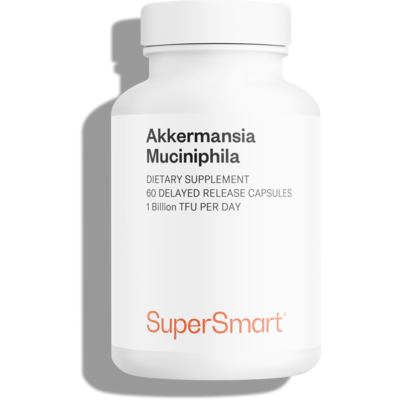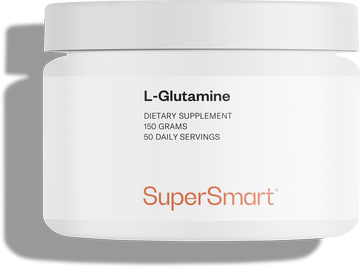Studies reveal links between microbiota diversity and longevity
What if our longevity depended on the composition of our microbiota? According to several scientific studies, there is a link between the diversity of the intestinal flora and old age.

Intestinal microbiota and longevity: a link gaining confirmation
What is the purpose of the microbiota?
The intestinal microbiota refers to all the microorganisms (bacteria, viruses, yeasts, etc.) that live together in our digestive tract. This ecosystem, with some 100,000 billion hosts (and weighing between 1 and 2 kg!), plays a part in many biological functions, some of which are involved in the mechanisms of aging (1):
- it facilitates the assimilation of nutrients and assists in the breakdown of certain non-digestible compounds (such as fibre);
- it is involved in the synthesis of certain vitamins (B, K) and amino acids (isoleucine, leucine, valine);
- it produces short-chain fatty acids (such as butyrate) with supposed protective effects;
- it modulates immunity and regulates systemic inflammation.
The importance of microbial diversity
In recent years, a crucial concept has emerged in the scientific community: microbial diversity. There is every reason to believe that an intestinal flora containing a wider variety of microorganisms offers greater resilience to infections, oxidative stress and metabolic diseases (2). Several studies have shown that centenarians have a more varied microbiota, with an increasing abundance of normally sub-dominant species, enabling them to produce anti-inflammatory metabolites associated with healthy aging (3-6).
Blue zones: what does the microbiota of centenarians have to say?
The 'blue zones', which include Okinawa in Japan, Sardinia in Italy, the Nicoya Peninsula in Costa Rica, the island of Ikaria in Greece and the municipality of Loma Linda in California, are home to populations with an exceptional proportion of centenarians. After studying their diet, lifestyle and social interactions at length, researchers are now taking a close look at the composition of their intestinal microbiota, in the hope of finding new clues as to the reasons for their remarkable longevity.
A study published in 2020 analyzed the microbiota of elderly women who had lived for the first 3 years of their lives in the village of Ogimi in Okinawa (7). The findings showed that they had a higher rate of colonisation by Akkermansia muciniphila in their intestines than those who moved to the region later. Previous studies have shown that this bacterium has the potential to improve insulin resistance and prevent obesity induced by a high-fat diet in mice (8).
![]() A strain featured in our latest-generation probiotic Akkermansia Municiphila.
A strain featured in our latest-generation probiotic Akkermansia Municiphila.
Japanese researchers also noted a clear abundance of Faecalibacterium prausnitzii (a bacterium from the Firmicutes branch that produces anti-inflammatory short-chain fatty acids and is considered a biomarker of a healthy intestine) in 90% of the Thai adults and elderly subjects analyzed (9). Christensenella minuta, which is more abundantly present in the tract of slim subjects, is also thought to be associated with a more efficient energy metabolism (10). Finally, other strains such as Bifidobacterium adolescentis and Methanobrevibacter smithii are thought to play a metabolically active role in the intestines of supercentenarians (11).
While no single strain seems to hold the secret to longevity, the scientific literature at least suggests that the diversity of species in the microbiota predicts better health with age.
How can we look after our microbiota to help us age well?
Appropriate dietary measures
While genetics and our environment partly determine the composition of our microbiota, we can fortunately take action by adopting simple dietary measures to support the diversity of this intestinal ecosystem and give ourselves the means to age in better health:
- Vary your diet as much as possible to cultivate a rich microbiota, with different types of microorganisms (12).
- Regularly consume foods rich in probiotics, ‘friendly’ bacteria that help to support the balance of the intestinal microbiota: yogurt, kefir, kombucha, sauerkraut, kimchi, fermented soya products (shoyu, tempeh, natto, etc.) (13);
- Increase your fibre intake, which has a prebiotic effect: it acts as a substrate for good intestinal bacteria to ensure their growth and development. Fruit and vegetables, wholegrain cereals and pulses are excellent sources (14);
- Reduce refined sugars, sweeteners and additives, which alter the balance of the microbiota and encourage the proliferation of opportunistic bacteria (15).
What about probiotic supplements?
To promote this microbial diversity, it is also highly recommended to opt for a multi-strain probiotic supplement to benefit from a broader spectrum of beneficial microorganisms from the Lactobacillus, Bifidobacterium and Lactococcus families, among others (16).
![]() Probio Forte combines 5 of the most extensively researched probiotic strains: Bifidobacterium lactis, Lactococcus lactis and the trio Lactobacillus acidophilus, casei and plantarum.
Probio Forte combines 5 of the most extensively researched probiotic strains: Bifidobacterium lactis, Lactococcus lactis and the trio Lactobacillus acidophilus, casei and plantarum.
![]() With its 20 synergistic strains, Full Spectrum Probiotic is one of the most complete formulas on the market.
With its 20 synergistic strains, Full Spectrum Probiotic is one of the most complete formulas on the market.
SUPERSMART ADVICE
References
- Jandhyala SM, Talukdar R, Subramanyam C, Vuyyuru H, Sasikala M, Nageshwar Reddy D. Role of the normal gut microbiota. World J Gastroenterol. 2015 Aug 7;21(29):8787-803. doi: 10.3748/wjg.v21.i29.8787. PMID: 26269668; PMCID: PMC4528021.
- Mosca A, Leclerc M, Hugot JP. Gut Microbiota Diversity and Human Diseases: Should We Reintroduce Key Predators in Our Ecosystem? Front Microbiol. 2016 Mar 31;7:455. doi: 10.3389/fmicb.2016.00455. PMID: 27065999; PMCID: PMC4815357.
- Biagi E, Franceschi C, Rampelli S, Severgnini M, Ostan R, Turroni S, Consolandi C, Quercia S, Scurti M, Monti D, Capri M, Brigidi P, Candela M. Gut Microbiota and Extreme Longevity. Curr Biol. 2016 Jun 6;26(11):1480-5. doi: 10.1016/j.cub.2016.04.016. Epub 2016 May 12. PMID: 27185560.
- Badal VD, Vaccariello ED, Murray ER, Yu KE, Knight R, Jeste DV, Nguyen TT. The Gut Microbiome, Aging, and Longevity: A Systematic Review. Nutrients. 2020 Dec 7;12(12):3759. doi: 10.3390/nu12123759. PMID: 33297486; PMCID: PMC7762384.
- Bradley E, Haran J. The human gut microbiome and aging. Gut Microbes. 2024 Jan-Dec;16(1):2359677. doi: 10.1080/19490976.2024.2359677. Epub 2024 Jun 3. PMID: 38831607; PMCID: PMC11152108.
- Lozada-Martinez ID, Lozada-Martinez LM, Anaya JM. Gut microbiota in centenarians: A potential metabolic and aging regulator in the study of extreme longevity. Aging Med (Milton). 2024 Jun 14;7(3):406-413. doi: 10.1002/agm2.12336. PMID: 38975304; PMCID: PMC11222757.
- Morita H, Ichishima M, Tada I, Shiroma H, Miyagi M, Nakamura T, Tanaka H, Ikematsu S. Gut microbial composition of elderly women born in the Japanese longevity village Ogimi. Biosci Microbiota Food Health. 2021;40(1):75-79. doi: 10.12938/bmfh.2019-055. Epub 2020 Aug 21. PMID: 33520572; PMCID: PMC7817513.
- Everard A, Belzer C, Geurts L, Ouwerkerk JP, Druart C, Bindels LB, Guiot Y, Derrien M, Muccioli GG, Delzenne NM, de Vos WM, Cani PD. Cross-talk between Akkermansia muciniphila and intestinal epithelium controls diet-induced obesity. Proc Natl Acad Sci U S A. 2013 May 28;110(22):9066-71. doi: 10.1073/pnas.1219451110. Epub 2013 May 13. PMID: 23671105; PMCID: PMC3670398.
- La-Ongkham O, Nakphaichit M, Nakayama J, Keawsompong S, Nitisinprasert S. Age-related changes in the gut microbiota and the core gut microbiome of healthy Thai humans. 3 Biotech. 2020 Jun;10(6):276. doi: 10.1007/s13205-020-02265-7. Epub 2020 May 30. PMID: 32537376; PMCID: PMC7261292.
- Akbuğa-Schön T, Suzuki TA, Jakob D, Vu DL, Waters JL, Ley RE. The keystone gut species Christensenella minuta boosts gut microbial biomass and voluntary physical activity in mice. mBio. 2024 Feb 14;15(2):e0283623. doi: 10.1128/mbio.02836-23. Epub 2023 Dec 22. PMID: 38132571; PMCID: PMC10865807.
- Kreouzi M, Theodorakis N, Constantinou C. Lessons Learned From Blue Zones, Lifestyle Medicine Pillars and Beyond: An Update on the Contributions of Behavior and Genetics to Wellbeing and Longevity. Am J Lifestyle Med. 2022 Aug 20;18(6):750-765. doi: 10.1177/15598276221118494. PMID: 39507913; PMCID: PMC11536469.
- Heiman ML, Greenway FL. A healthy gastrointestinal microbiome is dependent on dietary diversity. Mol Metab. 2016 Mar 5;5(5):317-320. doi: 10.1016/j.molmet.2016.02.005. PMID: 27110483; PMCID: PMC4837298.
- Pyo Y, Kwon KH, Jung YJ. Probiotic Functions in Fermented Foods: Anti-Viral, Immunomodulatory, and Anti-Cancer Benefits. 2024 Jul 28;13(15):2386. doi: 10.3390/foods13152386. PMID: 39123577; PMCID: PMC11311591.
- Fu J, Zheng Y, Gao Y, Xu W. Dietary Fiber Intake and Gut Microbiota in Human Health. 2022 Dec 18;10(12):2507. doi: 10.3390/microorganisms10122507. PMID: 36557760; PMCID: PMC9787832.
- Satokari R. High Intake of Sugar and the Balance between Pro- and Anti-Inflammatory Gut Bacteria. 2020 May 8;12(5):1348. doi: 10.3390/nu12051348. PMID: 32397233; PMCID: PMC7284805.
- Ni Y, Yang X, Zheng L, Wang Z, Wu L, Jiang J, Yang T, Ma L, Fu Z. Lactobacillus and Bifidobacterium Improves Physiological Function and Cognitive Ability in Aged Mice by the Regulation of Gut Microbiota. Mol Nutr Food Res. 2019 Nov;63(22):e1900603. doi: 10.1002/mnfr.201900603. Epub 2019 Sep 25. PMID: 31433910.
Keywords
1 Days
Reputable companysearch and the number of…
The research and the number of selection of products.
NAKHJAVAN Shervin
14 Days
The Anti Aromatase is a great product
The Anti Aromatase is a great product. You just need to have constant inventory. Recently this product has been out of stock.
GEORGE Verne
16 Days
Great help on chat
Great help on chat. Knowledgeable and friendly.
Jason Argos
19 Days
Customer service was fast and friendly.
Customer service helped to stop the transaction process of the subscription. I appreciated that.
Greenie
20 Days
I order here due to the high quality of…
I order here due to the high quality of the products and the quick delivery of items - thank you
Barbara J
21 Days
SuperSmart's Eye Pressure supplements: highly recommended!
I purchase SuperSmart's Eye Pressure supplements regularly for over 5 years, and gotta say they are truly a wonderful product for my Glaucoma. Highly recommended if you have eye pain from your Glaucoma.
D. Martinez
26 Days
Quick service
Quick service
MONELL
26 Days
Speedy service.
Speedy service.
ROSENTHAL Marvin
30 Days
Clear website- Efficient
Clear website. Excellent search engine and fast delivery!
Mohamad Hussein
33 Days
They have great products.
They have great products.
Vickie
33 Days
Great Shipping Time!
You Have A Great Shipping Time! Praise The Lord!
DMHoge
35 Days
Doctor Recommended!
Good pricing, very good availability, doctor recommended (couldn't find what I needed anywhere else), and it took only a week to arrive (which I can't complain about).
Al
35 Days
Great product and fast shipping
Great product and fast shipping
Marie
36 Days
New customer 1
I got my order fast and on time.
SA
36 Days
Great Service
Fast, good communication, as promised.
Juli








